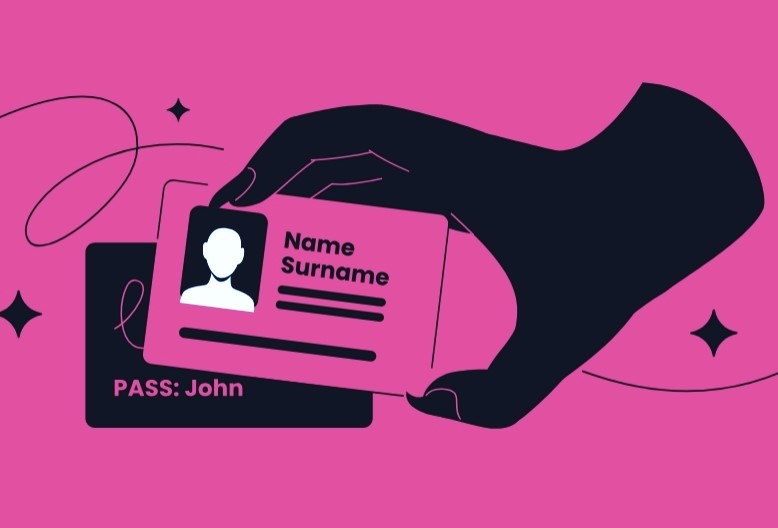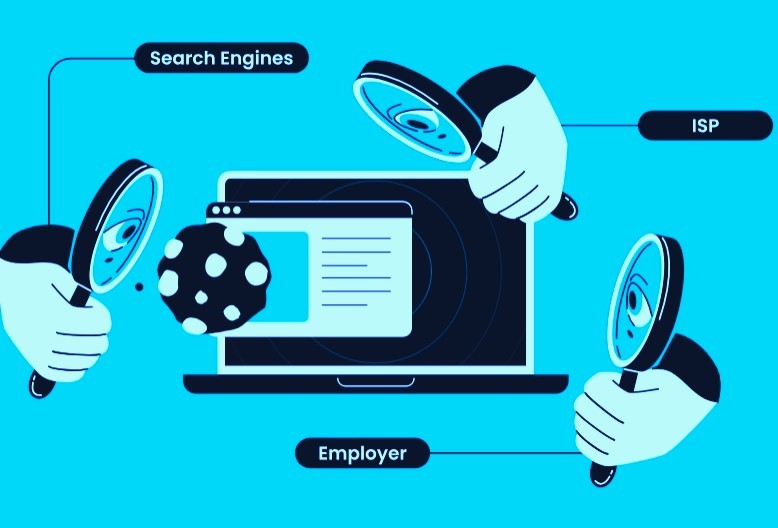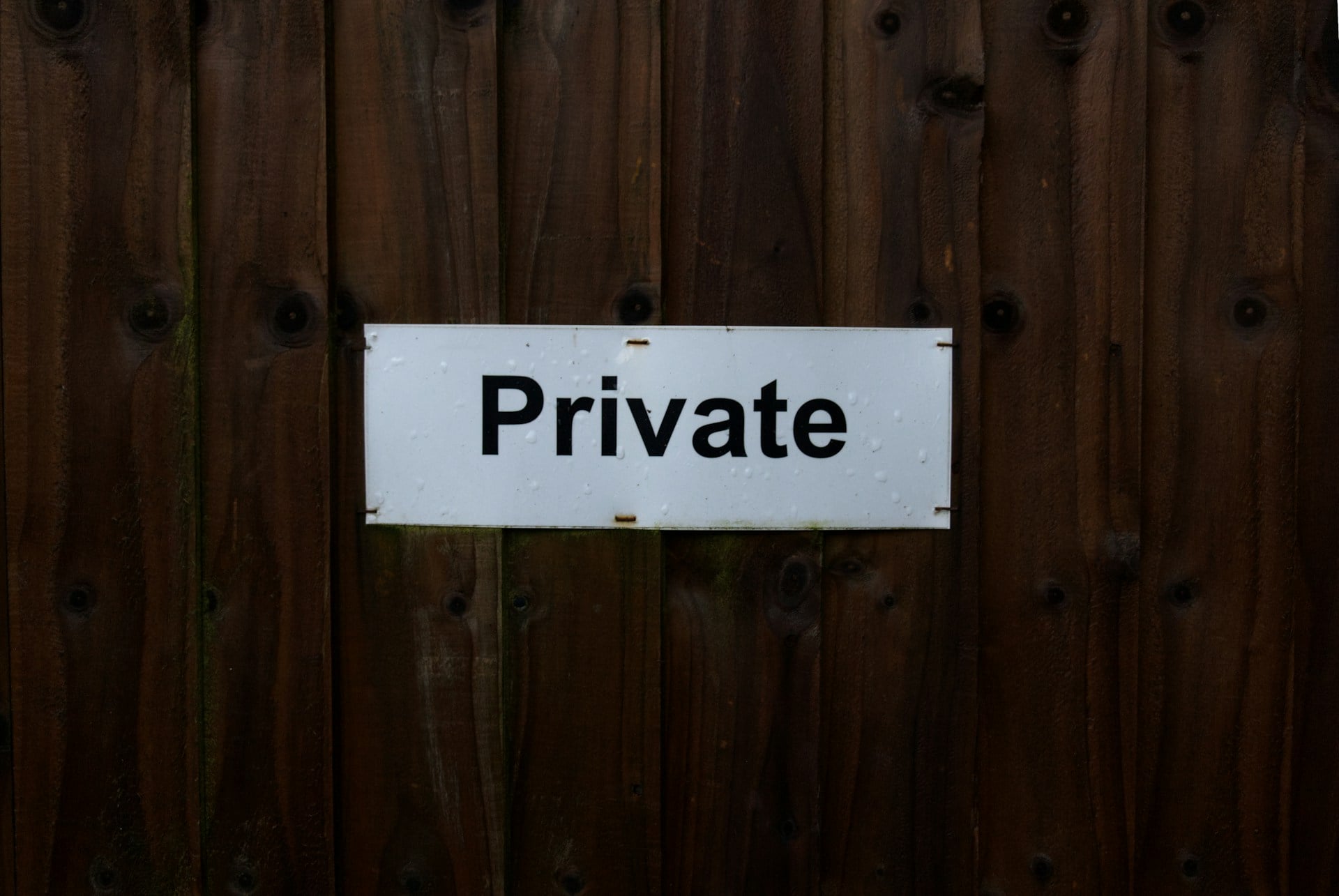
Google Chrome’s incognito mode stops your browser from saving cookies, history, and site data on your device. Although many users consider incognito mode a strong privacy tool, it has certain limitations. Sadly, incognito mode does not mask your IP address. Besides, it can track your online activities set by ISPs (internet service providers), network administrators, and websites. So, what kind of protection does incognito mode deliver? Let’s find it out in this post.
What does incognito mode hide?
Incognito mode works by hiding your browsing activity from others who use the same device. This means they cannot access your search history. But certain websites, advertisers, and your internet service provider (ISP) can see your online behavior easily.
How does incognito mode work?
Incognito mode is a specialized browsing tool that you find in Google Chrome. This mode opens a fresh browsing session whenever you activate it. Besides, it does not entertain previously stored information or data called cookies. Many people consider incognito mode safe and secure as compared to an ordinary browser. However, there is much more to it.
The incognito mode in Chrome gives you limited protection. Unfortunately, it does not guarantee complete privacy. Also, it does not hide your IP address. The same applies to other types of browsers that come with private browsing mode. All of them work similarly and use almost the same names.
- InPrivate Mode in Internet Explorer
- Private Mode in Mozilla Firefox
- Private Browsing in Safari
- InPrivate Mode in Microsoft Edge
- Incognito Mode in Google Chrome
Many people believe that incognito mode provides ultimate privacy. However, the truth is far from reality. Here is something that helps you understand incognito mode better.
| Incognito mode masks your IP address | No |
| Incognito mode does not store cookies | Yes |
| Ads cannot monitor the site data when incognito mode is on | No |
| Incognito mode prevents viruses and malware attacks | No |
| Private browsers do not allow Google to track internet traffic | No |
| Incognito mode does not allow websites to estimate geolocation | No |
| Saved bookmarks during incognito mode do not show up when using standard mode | No |
| Personal information, credit card details, and passwords are safe in incognito mode | No |
Incognito mode: What is it used for?
As you know, Chrome monitors your search history. This allows you to revisit websites that you already viewed some time ago. Although this is a convenient feature, your privacy gets compromised.
Typically, incognito mode provides you with two types of protections. It manages the stored cookies and stops your browser from saving your browsing history. When you are in incognito mode, it blocks existing cookies. Moreover, the new cookies are deleted automatically when you exit incognito mode.
Still, the incognito mode does not offer complete privacy. Your ISP and network administrator can still track your traffic. If you are looking for robust security and privacy, you need to use additional software like a private search engine or a VPN.
IP address: What is it?
An internet protocol (IP) address represents a unique code, for example, 192.0.2.1. An IP address helps identify your device, especially when it is on a network. In general, an IP address has two important functions. It pinpoints the location of your device on a specific network. And, it helps in identifying a specific component connecting to your device within a network.
In short, every electronic device that establishes a connection with the internet comes with a dedicated IP address.
Why does hiding an IP address sometimes become a necessity?

IP addresses act as a gateway to anything that’s online. Therefore, it could be potentially dangerous if IP addresses fall into the hands of hackers or third parties. Hiding an IP address becomes a necessity sometimes because of the following reasons.
-
To block targeted ads
The embedded tracking programs that come with web pages can record your online activities via your IP address. This helps advertisers to display personalized ads according to your browsing data.
-
To overcome geo-restricted content
Because the IP address reveals your actual location, certain websites can restrict content that is region-based. As a result, you cannot access services, videos, and other content.
-
To bypass restrictions from games and websites
Hackers can take advantage of your IP address to block your access to websites, online games, and various online services.
-
To keep personal information safe
Hackers can use your IP address to access your personal information. These might include phone numbers, addresses, social security numbers, etc. Bad actors can sell the collected data on the dark web or use it for identity theft. Apart from making your IP address invisible, you can use an Alternative ID or phone number generator.
-
To protect your online activity from being tracked
Not only your employers but also others can use your IP address to monitor your online activities. They will keep track of the websites that you visit.
-
To prevent DDoS attacks
Hackers can launch DDoS (Distributed Denial of Service) attacks by using your IP address. The attack will flood your device with traffic until it crashes or goes offline.
-
To protect yourself from identity theft
Malicious actors can route illegitimate activities via your IP address. As a result, you will be framed for criminal activities that you did not even commit.
What are the best ways to hide your IP address?
While there are several ways to hide an IP address, here are some of the popular ones.
-
VPN
A VPN hides your IP address by encrypting your connection and routing it through secure servers. This ensures both privacy and protection online.
-
Tor Browser
Using a Tor Browser helps you to hide your IP and encrypt data with layered security. However, it may take some time for new users to get used to it.
-
Proxy servers
Proxies hide your IP by using theirs. Because they don’t encrypt data, it makes you vulnerable to tracking and often causes slower speeds.
Incognito mode vs VPN: What is the difference?

Incognito mode does not store your browsing data on your device. Still, your ISP, network admin, search engines, and advertisers can track your online activity.
A VPN, on the other hand, hides your IP, encrypts your connection, and protects your activity from ISPs, websites, online surveillance, and hackers.
But when should you use these modes? Let’s consider different scenarios.
-
For home network
VPN is the best choice. Setting up a VPN on your router secures all connected devices with one encrypted network shield.
-
For public computers
Incognito mode is the best choice. On shared computers, Incognito mode keeps your logins and history private by deleting all activity once you close the session.
-
When travelling
VPN is the best choice. A VPN lets you access global content while encrypting your connection and hiding your IP. It keeps your data safe even on unfamiliar networks.
-
Shopping for surprise gifts
Incognito mode is the best choice. It hides your browsing history from others on the same device, making it perfect for keeping surprises secret.
Incognito Mode vs Surfshark Search
Incognito mode hides your browsing data from your device. However, it doesn’t mask your IP. Therefore, hackers and ISPs can still see your search history, cookies, and browsing details.
Surfshark Search gives you a private browsing experience by keeping your online activity untracked. Also, it keeps your payment details and email safe.
| Incognito Mode | Surfshark Search | |
| Hides search history | No | Yes |
| Collects IP | Yes | No |
| Remove ads | No | Yes |
| Organic search results | No | Yes |
Conclusion: Incognito mode does not hide your IP
Incognito mode offers limited protection. As such, your data is still exposed to hackers and trackers. For real privacy, use a VPN, Tor, or a proxy. You can consider trying Surfshark Search for truly untracked browsing and completely organic search results. Surfshark allows you to explore the internet securely without leaving your digital footprints. This gives you complete peace of mind.
Frequently Asked Questions
-
Does your IP stay hidden when using incognito mode?
Incognito mode does not hide your IP address. Although it can hide personal data from prying eyes, your IP is still exposed to the websites you visit. Moreover, it exposes the type of browser you are using, including its settings and your OS. Incognito mode makes your computer secure and private.
-
Can the Wi-Fi owner see your browsing history in Incognito mode?
Yes, your internet service provider and the Wi-Fi owner can view the websites you are visiting in incognito mode. Although your browser does not record your activity, the router can still get information on your activity. And, may send it to your internet service provider.
-
Are there alternatives to using incognito mode?
You can use a virtual private network (VPN) or Surfshark Search if you do not want to use incognito mode. A VPN hides your traffic, encrypts your connection, and improves online privacy. Whereas Surfshark Search is an advanced search engine that gives organic search results. It does not impact previous searches or browsing history.
-
What information does Incognito mode keep private?
Incognito mode allows you to browse securely and privately. It hides your browsing history, removes session data, clears search history and form data, and deletes cookies. It does not store your activity locally on your device.
-
Do VPN and incognito mode in Chrome work similarly?
No, VPN and incognito mode are different. A VPN hides your IP and encrypts your connection to give you online anonymity. Incognito mode does not store your browsing history on your device locally.
-
How can I use incognito mode?
Using incognito mode is straightforward. You can use either a keyboard or a mouse to use incognito mode and browse the internet privately. Follow the steps below.
| Browser | Keyboard | Mouse |
| Internet Explorer | CTRL+Shift+P | Settings, New Private Window |
| Google Chrome | Ctrl+Shift+N | Settings, New Incognito Window |
| Firefox | Ctrl+Shift+P | Settings, New Private Window |
| Edge | Ctrl+Shift+P | Settings, New Private Window |
| Safari | Shift+Command+N | Settings, Private Mode |
| Brave | Ctrl+Shift+N | Settings, New Incognito Window |





